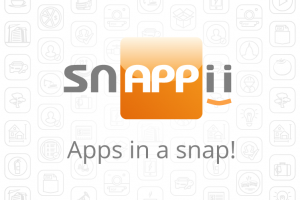 The extremely competitive construction industry is facing a burgeoning set of challenges including labor and cost overrun management, jobsite injuries, lack of system interoperability, poor data flow and information access and management. Project opportunities continue to abound but field data collection and management remains cumbersome and inefficient. Disparate software systems and a heavy dependency on paper-based data collection creates a data access nightmare including emergency situations when the need for fast and precise information is key. Automating construction operations through mobile mobile business apps not only increases productivity, decreases expenses and streamlines operations but can enhance safety and emergency response as well.
The extremely competitive construction industry is facing a burgeoning set of challenges including labor and cost overrun management, jobsite injuries, lack of system interoperability, poor data flow and information access and management. Project opportunities continue to abound but field data collection and management remains cumbersome and inefficient. Disparate software systems and a heavy dependency on paper-based data collection creates a data access nightmare including emergency situations when the need for fast and precise information is key. Automating construction operations through mobile mobile business apps not only increases productivity, decreases expenses and streamlines operations but can enhance safety and emergency response as well.
It is estimated that 90% of all cost overruns on construction projects are caused by labor issues. Keeping a daily, microscopic focus on this cost is ideal, but difficult to execute with so many variables. There may be weather issues, site conditions and delivery and safety issues that affect production. Project/site managers need to easily and efficiently track a daily comparison of budget to actual expenditures, tallying man hours to specific tasks, assessing time spent vs. tasks completed, etc. They should also be able to tie those daily activities and costs back to the total project cost to identify overrun trends.
Much of the information in a construction job is form based, from time cards and daily equipment logs, to bids, parcel evaluations and change orders. Many initial forms spur additional forms and the strong dependency on traditional paper methods for data collection results in data repetition, redundant processes, and poor data quality. It’s also difficult to manage multiple blue prints, CAD drawings, bid documents and more while traversing any number of field site conditions. Not to mention the overwhelming amount of reference material involved in every project. Having all needed forms and documentation at the ready in one compact, easy to access location means avoiding massive amounts of paper, improving data accuracy and ensuring field resources have information at their fingertips wherever they are.
Even with the many software programs typically involved in construction projects the information flow between these groups is typically paper-based. Additionally, because each construction discipline houses information on their own database, there is no single, easily accessible repository of all project information. This has created a nightmare for everyone involved including emergency planners and responders who need immediate jobsite information including interior, surrounding buildings, access roads, and utilities. It also contributes to higher job site injury rates with no efficient means to collect and distribute real-time workplace safety data, or push out notifications of new regulations, safety details or emergency processes. Tackling these issues requires that all project data across disciplines and systems must be aggregated and available in an immediate and seamless view.
Some of the many benefits mobile mobile business apps can offer the Construction industry include:
– Identify and avoid cost overruns by monitoring daily work operations including numeric/alphanumeric, date/time, GPS/location, visual map, photographs and signature capture.
– Aggregate data and allow data capture and display to and/from disparate back end systems, submitting captured data where needed – via Email (body, PDF, spreadsheet), web post, internal database and in-app.
– Collect real-time workplace safety data to help predict potential risks and dramatically reduce injury rates.
– Enhance Emergency Response –access resources, collect and submit data and collaborate in real-time with multiple teams.
– Streamline and manage bid operations with immediate data capture and report access, including photos, drawings and signatures
– Easily access blueprints and design specs for multiple projects, all in one compact location, from anywhere.
– Track and access various items like materials, work lists, punch lists, site status, weather conditions, supply deliveries and quality control – on the spot.
– Utilize multiple in-app calculators for materials (paint, concrete, lumber, roofing, drywall, carpet, steel…) and measurements (pitch, rise, run, arcs, circumference, right-angle, etc.).
– Access contact, bid and project information on everyone involved including architects, structural and civil engineers, subcontractors in every discipline, local government offices and more
– Work offline – store and access data locally and submit when internet connection is available.
– House a document library for procedures manuals, checklists for QA/QC, safety and commissioning, local ordinances, hazardous material sheets, etc.
– Deploy notifications, new information and updates/changes immediately across all devices.
Providing real-time, aggregated, seamless field data access from anywhere, anytime, across all construction disciplines and resources will provide a huge boon to the construction industry. Implementing robust, cross platform mobile mobile business apps to address this need allows everyone involved in construction projects of any scale to streamline communications, increase productivity, improve safety, decrease expenses and help ensure projects are completed on time and on budget.

 Login
Login

